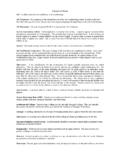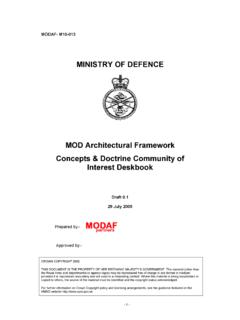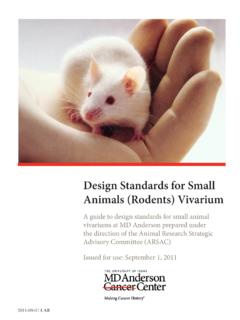Transcription of BRITISH HISTORY AND CULTURE - Ostravská univerzita
1 BRITISH HISTORY AND CULTURE This text complements the e-learning material entitled THE UK 2006 . It has been prepared for extra-mural (C V) students. Stella Nangonov Ostrava 2008 2 List of less frequently used abbreviations: = Anno Domini (na eho letopo tu) = before Christ b. = born cca. = about cc. = centuries cf. = compare = that is p. = page Further reading: Lucie-Smith, Edward, et al.: The New BRITISH Painting. Oxford: OUP, 1988 McDowall, David: An Illustrated HISTORY of Britain. London: Longman, 1991 Morgan, Kenneth O., et al.: The Oxford Illustrated HISTORY of Britain. Oxford: OUP, 1985 Morgan, N.: Famous Scientists. Wayland, 1993 Scholes, : The Oxford Companion to Music.
2 Oxford: OUP, 1989 Vesey, G. and Foulkes, P.: Collins Dictionary of Philosophy. London: HarperCollins Publishers, 1990 Watkin, David: English Architecture. London: Thames and Hudson, 2002 Wilton, Andrew: Five Centuries of BRITISH Painting. London: Thames and Hudson, 2001 Yarwood, Doreen: The Architecture of Britain. London: Batsford, 1990 3 LIST OF CONTENTS A. A BRIEF SURVEY OF CHIEF EVENTS AND DEVELOPMENTS IN THE COURSE OF BRITISH HISTORY 5 FROM THE EARLIEST TIMES TO THE END OF THE 15TH CENTURY 5 The mingling of the races 5 The Iberians and the Celts 5 Roman Britain
3 5 The Anglo-Saxon period 6 From the Norman Conquest to the Hundred Years War: the feudal state 7 From the outbreak of the Hundred Years War to the end of the Wars of the Roses: the decay of feudalism 7 The Hundred Years War 8 The Black Death and the Peasants Revolt 8 The Wars of the Roses
4 8 Exercises 9 FROM THE TUDOR PERIOD TO THE END OF THE NAPOLEONIC WARS 10 The Tudor period 10 The Stuart era 11 The early Stuarts, the Civil War and the Republican period 11 From the restoration of the monarchy to the end of the Stuart era 11 The wars with France, the building of a colonial empire and the Industrial Revolution 11 I.
5 Home and foreign policy 11 II. The Industrial Revolution 12 Exercises 12 DEVELOPMENTS IN THE 19TH AND 20TH CENTURIES 14 The 19th century 14 Home affairs 14 Foreign affairs and colonial expansion 15 Economy
6 15 The 20th century 15 Home affairs 15 Foreign affairs 16 Economy 17 Exercises 17 MAPS 18 INDEX AND GLOSSARY 24 B.
7 A BRIEF SURVEY OF DEVELOPMENTS IN BRITISH CULTURE 31 MAIN architectural STYLES IN BRITAIN AND LEADING BRITISH ARCHITECTS 31 The Middle Ages 31 The late Tudor and Stuart periods 33 English Baroque and Classicism 36 Victorian historicism and the 20th century 38 A list of architectural terms used in this subchapter 40 Exercises 43 GREAT PAINTERS AND SCULPTORS ACTIVE IN BRITAIN 45 The 16th and 17th centuries 45 The 18th century 47 The 19th century 51 The 20th century 54 Glossary 56 Exercises 60 A SURVEY OF BRITISH PHILOSOPHICAL THINKING AND OF DEVELOPMENTS IN SCIENCE AND MUSIC 61 Chief BRITISH philosophers and philosophical systems 61
8 Eminent BRITISH scientists and inventors 63 A brief outline of the development of BRITISH music 65 Index and Glossary 66 Exercises 69 C. KEY TO EXERCISES 71 5A. A BRIEF SURVEY OF CHIEF EVENTS AND DEVELOPMENTS IN THE COURSE OF BRITISH HISTORY CHAPTER : FROM THE EARLIEST TIMES TO THE END OF THE 15TH CENTURY This chapter describes the oldest inhabitants of Britain, the settlers and invaders who kept coming there until 1066, and the feudal period in Britain.
9 The mingling of the races ( ,000 11th century) The Iberians and the Celts ( ,000-55 ) The oldest human inhabitants probably came to Britain about 250,000 years ago over the landbridge that connected today s BRITISH Isles and the Continent of Europe at that time. The so-called Iberians reached Britain between 3,500 and 3,000 , probably coming from the Iberian Peninsula. Both the Iberians and the so-called Beaker people ( ,000 ; named after the beaker-shaped pots they made) settled in the south of England. The Iberians used stone and bone tools and their settlements were based on henges , great circles of earth banks and huge standing stones ( Stonehenge).
10 The Beaker people brought the knowledge of bronze to Britain. ( ) Soon after 700 , Celtic tribes began to invade Britain. Between and 100 , they settled the whole of Britain. They formed tribal kingdoms that were frequently at war with each other. Roman Britain (55 5th century ) Britain became a sphere of Roman interest in the 1st century Julius Ceasar attempted to conquer Britain twice, in 55 and 54 , his main aim being to prevent the Britons from providing their kinsmen in today s France with military aid. But the actual Roman conquest of Britain by Emperor Claudius took place in 43 By 80 , the Romans had conquered today s England, Wales and southern Scotland, but problems in other parts of their empire made them withdraw behind the so-called Hadrian s Wall in the first half of the 2nd century.







